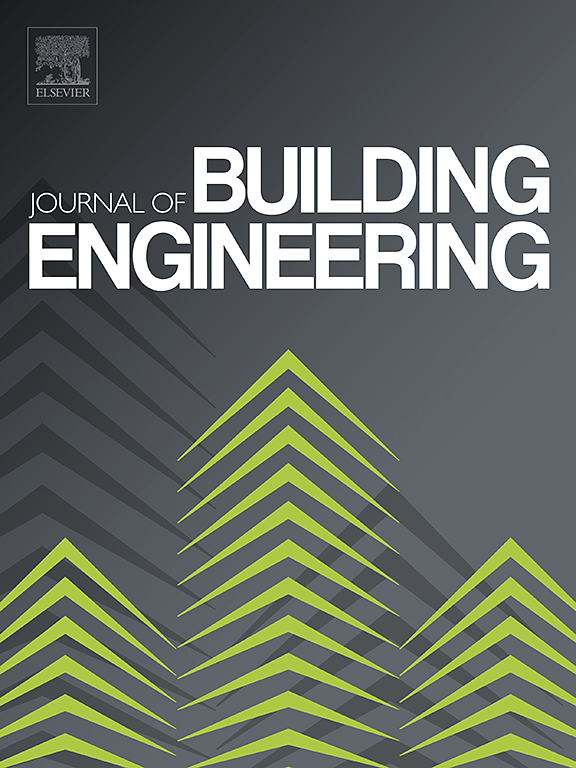Vertical coherence function model of along-wind fluctuating aerodynamic force on rectangular high-rise buildings with different side ratios
IF 6.7
2区 工程技术
Q1 CONSTRUCTION & BUILDING TECHNOLOGY
引用次数: 0
Abstract
In order to investigate the vertical coherence of the along-wind aerodynamic fluctuating force on rectangular high-rise buildings with different side ratios, synchronized pressure tests were conducted for rectangular models with thirteen side ratios (1/8-8) under two turbulent boundary layer flows in the wind tunnel. The spatial correlation of along-wind fluctuating wind loads was investigated. Results showed that the correlation coefficients of wind pressure on windward and leeward walls were lower than the drag coefficients. The coherence function of the along-wind aerodynamic fluctuating force on rectangular high-rise buildings exhibits an exponential decrease as the frequency increases, and it has a value less than 1 when the frequency is equal to 0. As the vertical distance increases, the coherence function gradually decreases. In addition, an increase in the ratio of building breadth to the turbulence integral length scale leads to a decrease in the decay parameter of the coherence function. The existing coherence function models have difficulty accurately capturing the variation of the coherence function with side ratio, especially for the side ratios less than 1/4 and more than 4, and these models differ significantly from the coherence function calculated by experimental results when the vertical distance is large. Therefore, to fulfill the requirements in engineering, a new generalized coherence function model was developed, incorporating the influence of side ratio, wind velocity, turbulence integral length scale, and vertical distance, and it agrees well with the experimental results across side ratios from 1/8 to 8. The wind-induced displacement and acceleration calculated by the proposed coherence function model agree better with those calculated by experimental values than the empirical models proposed by Davenport and GB 50009-2012.
求助全文
约1分钟内获得全文
求助全文
来源期刊

Journal of building engineering
Engineering-Civil and Structural Engineering
CiteScore
10.00
自引率
12.50%
发文量
1901
审稿时长
35 days
期刊介绍:
The Journal of Building Engineering is an interdisciplinary journal that covers all aspects of science and technology concerned with the whole life cycle of the built environment; from the design phase through to construction, operation, performance, maintenance and its deterioration.
 求助内容:
求助内容: 应助结果提醒方式:
应助结果提醒方式:


